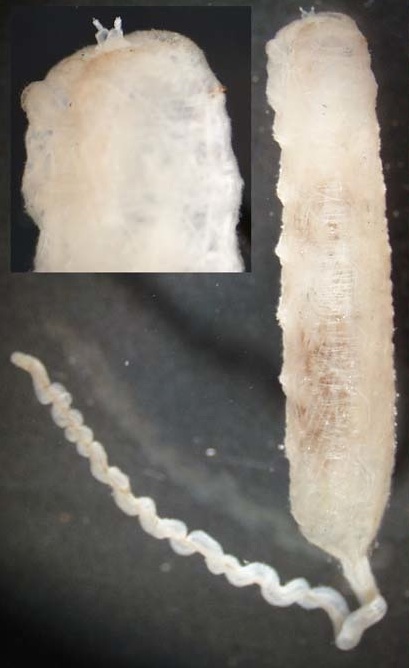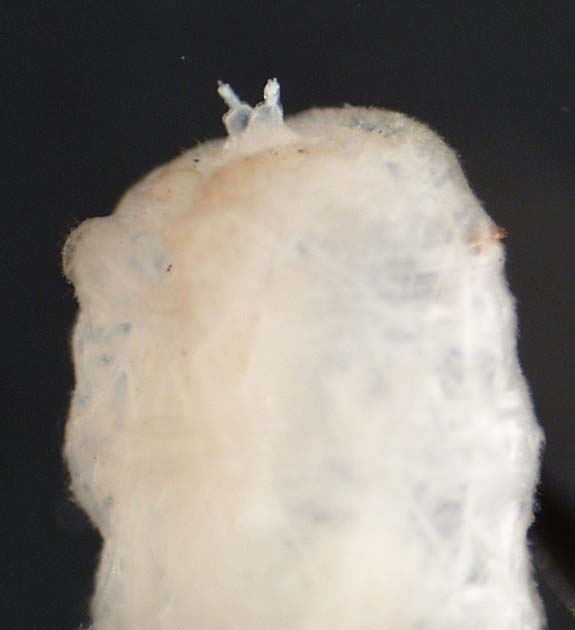
THE XERCES SOCIETY FOR INVERTEBRATE CONSERVATION Aquatic Invertebrates in Pacific Northwest Freshwater Wetlands |
| Identify taxa |
Syrphidae (rat tailed maggots; flower flies) |
The rat tailed maggots burrow into the organic muck of a wide variety of still and stagnant water environments, including manure pits and sewage lagoons. They manage to breathe in these habitats by extending their extremely long respiratory tube above the surface of the muck and obtaining oxygen from the air. The larvae lack a distinct head. Their body is thick and cylindrical with blunt ends; they have 7 pairs of prolegs, one pair on the second thoracic segment and the remaining pairs on the abdominal segments. The abdomen terminates in the remarkably long, thin breathing tube that gives these larvae their name; when extended, this tube may be longer than the body. The adults are also called flower flies, drone flies, or hover flies, and are a familiar sight to many. They can be quite colorful, often with yellow stripes that mimic bees or wasps. |
Size: large Identifying feature(s): non-distinct head, thick cylindrical body; remarkably long, thin breathing tube on the hind end Habitat: sediments and detritus of lake margins, marshes, tree-holes; wetlands Tolerance to pollutants: tolerant |
 |
|
© 2007 Xerces Society
Contact info@xerces.org

